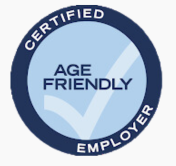We’ve scaled our business on a shoestring. We’ve had to. As a mission-driven enterprise trying to create a market where others won’t tread, we’ve been forced to operate and grow with rock-bottom fees, razor thin margins and no outside funding or debt. Our business is part-time professional staffing. We launched in 2010 to tap the largely underutilized talent pool of moms re-entering or scaling back from the professional workplace. To get companies to give our candidates a try, we’ve squeezed our rates significantly below other staffing agencies. And while we do the same level of recruiting, screening and vetting of each of our candidates, we make a fraction of the revenue because our placements are part-time. Yet we’ve grown over 60% annually to over $6M in revenue and have been named to Inc. Magazine’s list of Fastest Growing Companies for three consecutive years, all while remaining profitable. We’ve learned essential lessons for staying lean and agile, protecting cash and profits, and expanding at the right pace. Here are 10 of the most critical lessons we’ve learned about scaling on a shoestring…
1. Go Virtual
In any metropolitan area, leasing an office for a single employee can run $7000+ annually draining 5% to 10% or more of your revenue if you try to outfit an entire staff. That’s a lot of cash you could be putting back into your business. And with the collaborative power of cloud-based systems and mobile apps coupled with a workforce that increasingly demands flexibility, there are compelling reasons to bypass office space and go virtual. Or as we do, determine where office space is absolutely essential and take advantage of fractional office space to go partially virtual. We rent several shared office units for $700/month each that allow us to conduct candidate interviews in a professional, private environment plus gives us access to conference rooms for weekly staff meetings and a training center for candidate workshops. Beyond that we’re virtual.
2. Leverage Part-time Staff
We call part-time professionals the ACE for small growing businesses. First, you can access and compete effectively against big companies for this exclusive talent pool that is not looking through traditional channels nor for the types of positions big companies (with bigger salaries, benefits and training) offer. Hiring part-time also allows you to calibrate hiring with the ups and downs of your business and test, alter and refine a position before making it a permanent part of your cost structure. Finally, this talent pool is economical – a bargain. They see flexibility as part of their compensation and work at very affordable rates, require little in the way of time-consuming training and mentoring, and most don’t need benefits. Hiring part-time has allowed us to bring expertise on board years before we could have if we had waited until we could afford full-time. Our entire staff of 15 is part-time and we could not ask for more dedicated, high-performing employees.
3. Tie Pay to Performance
Pay-for-performance compensation structures including commissions, bonuses, profit sharing and equity can be powerful tools, not only for motivating employees, but also for keeping payroll expenses in line with revenue. We’ve implemented variable compensation in a big way for our client-facing staff, where 80% to 90% of pay is based on the gross profit of our company. To implement these structures effectively, make sure you set and communicate performance-based earning potential up front, with specific targets and goals, so that you unleash the motivating power of the incentives throughout the year.
4. Avoid the Non-essentials
Sounds simple, but spending on tchotchkes, fancy software tools, subscriptions, memberships and other non-essentials before really knowing your business is a common trap many small businesses fall into, including us. Within a few months of launching, we purchased a CRM system to track prospects and stay connected with our customers. But we only had a handful of customers! So the expensive tool sat idle before we abandoned it several months later and used an Excel spreadsheet to manage leads for the next five years of our business. In our experience working with small organic growth companies, the smart ones hunker down, are ultra-cost conscious and steel themselves to seductive offerings and sales pitches.
5. Barter
We’ve saved thousands of dollars trading our services for valued services of other companies. We’ve traded candidate placements for chamber memberships. We’ve traded placements for advertising in magazines. And when companies have provided prized referrals to us, we’ve featured them in our newsletters or on our website. Bartering is especially useful when you’re in the initial cash-constrained phase of growth. So figure out what services you can offer that have modest incremental cost on your internal resources and make a deal.
6. Be Your Own PR Agent
For small businesses, getting a news hit takes a lot of time and persistence. And that can cost a lot of money if you’re outsourcing. We’ve found we can do a pretty effective job on our own for free with calculated and persistent targeting of journalists and use of tools like HARO. Figure out who writes about your industry or expertise, watch how they write, take note of facts and figures they include, listen to the stories they tell and then custom package your own story. We’ve tweaked and tweaked our pitches and even enlisted the help of our candidates to get the attention of journalists and it has paid off with prominent newspaper articles, national online press, and local television news coverage.
7. Gain Traction with Do-It-Yourself Marketing Tools
Once you have a good understanding of your market, customer behaviors, and tactics that work in selling your products or services, take advantage of some low-cost marketing tools that you can implement yourself to boost the productivity of your business development staff. For example, off-the-shelf marketing automation tools enable you to automatically send customized emails to clients based on their interests and interactions with your digital footprint. Dynamic contact databases allow you to build highly tailored customer prospect lists. And social media advertising allows you to create simple ads yourself that can reach a targeted hidden audience at a budget you set. We’ve successfully leveraged all of these tools to amplify the power and reach of our part-time staff.
8. Test then Invest
For any significant investment you make in your business, whether it’s a new website, a sophisticated software platform, or even a new service offering, you want to make it count – no big gambles, no half-baked experiments. If you are growing organically, cash is critical and you have to protect it. Make sure you know what you’re trying to solve, what the desired outcomes and ROI of your investment are, and then prototype, measure and evaluate before taking the plunge. This process hasn’t necessarily prevented us from making bad investments, but the rigor of it has saved us from tanking the company or eroding our profitability significantly because of them.
9. Look for the Pivot
We’ve seen many small businesses come off the rails chasing revenue growth prematurely or over aggressively. Remember that organic growth is a long-term strategy, so expansion should build off your strengths with incremental, natural moves. Before expanding, make sure you’ve mastered and maximized your core business. Then let the push or pull of your customers guide your pivot. Are your clients pushing you to offer new services? Are prospects pulling you to enter new markets? After we’d been in business for a few years we realized we were spending hours on the phone with candidates pushing us to review resumes, conduct mock interviews and counsel on career re-entry strategies. We decided to monetize these services and now offer a series of workshops for a fee to provide the same advice. So be sensitive to pull and push forces and allow them, when the time is right, to guide your next moves.
10. Avoid Common Costly Mistakes
Tight budgets and thin staffs can drive small businesses to cut corners in ways that end up costing more in the way of fines, penalties or legal fees than saving. Some of the more common and costly mistakes we’ve lived or seen our clients live include failure to protect intellectual property and trademarks, improper classification of employees, late filings, inadequate cash management and revolving door hiring. Make sure you have the right expertise on your team and put in place tight contracts, processes, systems and controls to prevent being distracted or derailed by these avoidable missteps.
Gwenn Rosener is co-founder of FlexProfessionals, LLC, a niche staffing company specializing in sourcing professionals for part-time, project-based and flexible work arrangements. Contact: gwenn@flexprofessionalsllc.com.









